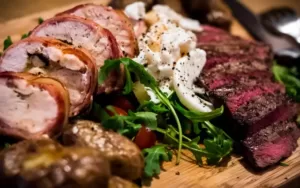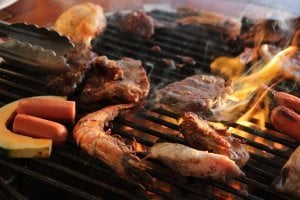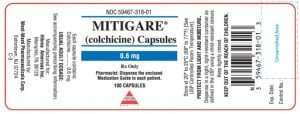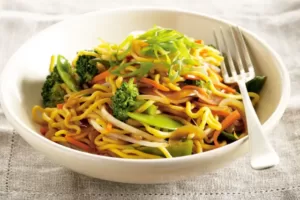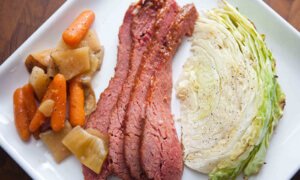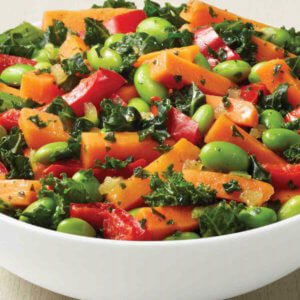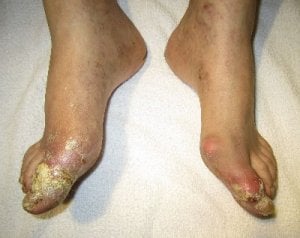Traditional gout advice on protein rich foods has always been “Avoid them!”
But as awareness grows about nutrition in general, and proteins in particular, does this advice still hold true?
And if it doesn’t, what are the dangers of going too low on protein?
Protein Rich Foods: Contents
Protein Rich Foods: Introduction
I’ve experienced growing concern about the advice given to gout sufferers concerning protein. There appears to be confusion between purines and protein, and the advice on protein looks out-of-date in the light of gout research in the current millennium.
A quick look at the topic reveals little clear guidance from government departments. Or from relevant professional bodies. So, I started an in-depth study.
My research has led me down a few deep, dark, sometimes mythical alleyways.
To try to make sense of it all, I’ve decided to split this topic into at least 3 articles. This one looks at current American guidelines or lack of them. I’ll look next at British guidelines, which in the absence of anything else are in danger of being adopted as a universal standard. Then, I will try and draw some conclusions.
Current Protein Guidelines For Gout Sufferers
High Protein Foods: Rheumatologist Advice
The first stop for gout guidelines should be the American College Of Rheumatologists (ACR). Their nearest thing to a guideline is a 2004 review of gout, diet and alcohol [1]. That document does mention the study into a 40:30:30 protein:carbohydrate:fats diet, but the recommendations are unclear:
Importantly, recent years have seen a surge in popularity of “low-carbohydrate, high protein diets” (e.g., Atkins, Zone, and South Beach diets). In a small, open study in overweight male gout subjects, a calorically restricted diet designed for IR management, with a 40/30/30 protein/carb/fat scheme and customized for high contents of seafood and mono-unsaturated fat as well as continued moderation in alcohol, achieved body weight lowering by ~17 pounds and also diminished hyperuricemia by 17 percent (3). But these results cannot be directly extrapolated to popular “low-carbohydrate” type diets, for which an adequately powered clinical trial in hyperuricemia and clinical gout has not yet been done.
The report is dismissive of evidence that milk protein may be beneficial to gout sufferers. This ignores Garrel’s 1991 investigation showing the acute effect of milk protein on uric acid levels. Also, it has not been updated to reflect Dalbeth’s similar 2009 investigation into milk and uric acid.
The report concludes with recommendations for gout patients, but these are not clearly defined. The protein advice is limited to:
concerns about the potential for ketosis and other effects of popular “low-carb” diets heightened in animal protein and fat to exacerbate hyperuricemia and gout.
[and]
Consumption of vegetables with high purine content or a diet high in protein by themselves do not appear to raise the risk of developing gout.
There have been other studies since this recommendation, and I will review those investigations in a separate article. However, in the absence of clear guidelines, it is likely that nutritional and medical practitioners will seek guidance elsewhere.
High Protein Foods: Heart & General Advice
Guidance from the American Heart Association (AHA) is often quoted when health aspects of high protein foods are discussed. There are, in fact, two key protein-related guidelines from AHA, which refer, indirectly to nutrition advice from the Institute of Medicine.
The most authoritative reference, from a protein point of view, is the second of their 2 guidelines, “Dietary Protein and Weight Reduction” [2] published in 2001. It is particularly likely to influence advisers to gouty arthritis sufferers, given the statement:
High-protein foods such as meat, poultry, seafood, eggs, seeds, and nuts are high in purines. Purines are broken down into uric acid, so excess consumption of these foods increases uric acid levels and may cause gout in susceptible individuals.
This is a very naive view of purine metabolism, and an unfortunate addition to the confusion that treats purines and proteins alike. Also, there is no reference to the, what was then, recent 2000 study on a 40% protein diet that appears to lower cholesterol as well as uric acid.
Anyway, they are strong recommendations in this AHA guidance to adopt a 15:55:30 protein:carbohydrate:fats ratio:
Total protein intake should not be excessive (average 50 to 100 g/d) and should be reasonably proportional ({approx}15% of kilocalories per day) to carbohydrate ({approx}55% of kilocalories per day) and fat ({approx}30% of kilocalories per day) intake.
It appears that in their haste to warn of the dangers of diets containing too high a proportion of animal protein and animal fat, they have adopted a low-protein approach, primarily from the preceding year’s wider-ranging “AHA Dietary Guidelines” [3].
I’ll confine myself to the protein part of these guidelines, and admit to some confusion, that might well arise from trying to analyze something from 10 years ago. The key point echoed in my quote above from the later report is the statement:
Although there are many conditions in which extra protein may be needed (growth, pregnancy, lactation, and some disease states), an average of 15% total energy or {approx}50 to 100 g/d should be adequate to meet most needs.
Note that the caution to recognize cases where extra protein is needed is lost between the two reports. Delving deeper, we can see how important this is. The AHA recommendations reference Advanced Nutrition and Human Metabolism (ANHM) by Goff, Gropper & Hunt (1995). Unfortunately, I only have access to the 2004 version, though the latest edition is 2008. This makes it difficult to understand if the dangers of low protein have been overlooked, or if they were not recognized when the 2000 Guidelines were published.
In a nutshell, the ANHM recognizes a 10% to 35% range for protein intake, noting that in some situations, especially where energy intake is restricted, 10% may be far too low, resulting in malnutrition. Where necessary, it might be more relevant to look at protein intake, which should be around 80g per day or 0.8g per kg body weight per day in normal circumstances.
The ANHM is a thorough explanation of nutrition issues and the main take-home is that cases need to be considered individually. Also, individual needs will change over time. Therefore fixed protein:carbohydrate:fats ratios might serve well as a starting point, but adjustments need to be made in the light of individual circumstances and test results.
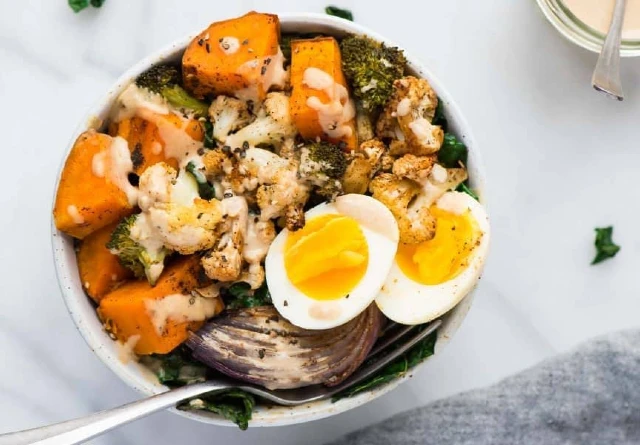
Protein Rich Foods: Next Steps
I will continue this review of protein-rich foods with an article on British Rheumatology Guidelines. Despite a focus on Great Britain, most of the issues affect every country, and the British guidelines are cited by many international gout studies.
If you have received specific nutrition advice from a professional advisor, please share it with us in the gout forums.
Protein Rich Foods Feedback
GoutPal visitor responses include:
Can a high protein diet cause gout?
Greg asked “Can a high protein diet cause gout?” To which I responded:
This is a common question when people confuse purines and protein. But the question needs to address uric acid. Also, a lot depends on the protein source. So ideally, you want to move towards increasing protein without overloading purines. Now that requires detailed meal planning. So talk to a dietician. Or, I can get you started if I know more about the foods you like to eat. Because you’ll never follow a diet for long if you don’t enjoy the meals.
Leave Protein Rich Foods to browse my Gout Diet Guidelines
Protein Rich Foods: References
- Author: Robert Terkeltaub. Titled: Health Professionals Follow-up Study on Gout: What Do We Now Tell Patients About Diet and Alcohol? Published: May 2004 Gout, Diet & Alcohol Guidelines
- Author: St Jeor ST, Howard BV, Prewitt TE, Bovee V, Bazzarre T, Eckel RH; Nutrition Committee of the Council on Nutrition, Physical Activity, and Metabolism of the American Heart Association. Titled: Dietary protein and weight reduction: a statement for healthcare professionals from the Nutrition Committee of the Council on Nutrition, Physical Activity, and Metabolism of the American Heart Association. Published: Circulation. 2001 Oct 9;104(15):1869-74. Dietary Protein & Weight Reduction
- Author: Krauss RM, Eckel RH, Howard B, Appel LJ, Daniels SR, Deckelbaum RJ, Erdman JW Jr, Kris-Etherton P, Goldberg IJ, Kotchen TA, Lichtenstein AH, Mitch WE, Mullis R, Robinson K, Wylie-Rosett J, St Jeor S, Suttie J, Tribble DL, Bazzarre TL. Titled: AHA Dietary Guidelines: revision 2000: A statement for healthcare professionals from the Nutrition Committee of the American Heart Association. Published: Circulation. 2000 Oct 31;102(18):2284-99.
Protein Rich Foods Document Change History
To read the document change history, click the GoutPal History image on the right.
the document change history, click the GoutPal History image on the right.
Do you have suggestions for improving Protein Rich Foods? Then, please add your comments to the Feedback Form, below.
Please give your feedback
Did this page help you? If yes, please consider a small donation. Your donations help keep GoutPal's gout support services free for everyone.
If not, please tell me how I can improve it to help you more.
- YouTube
- The gout forums.


